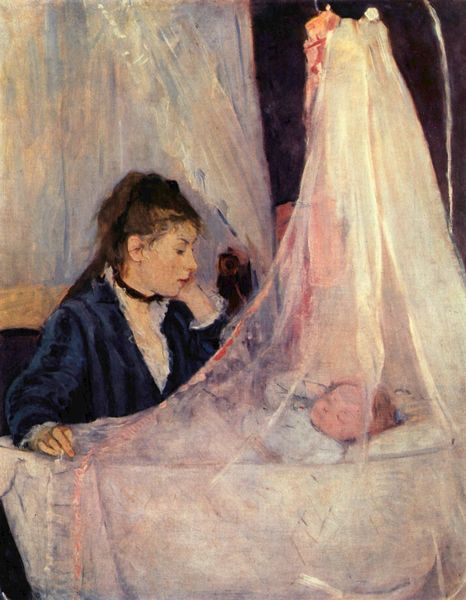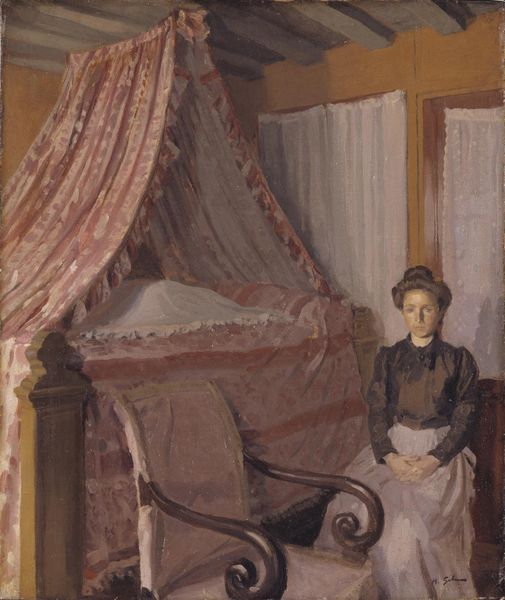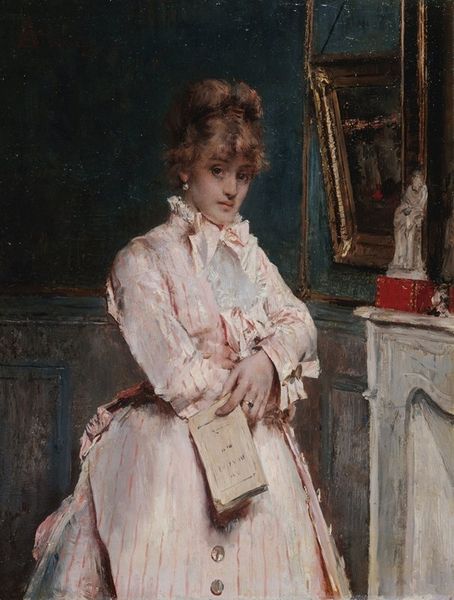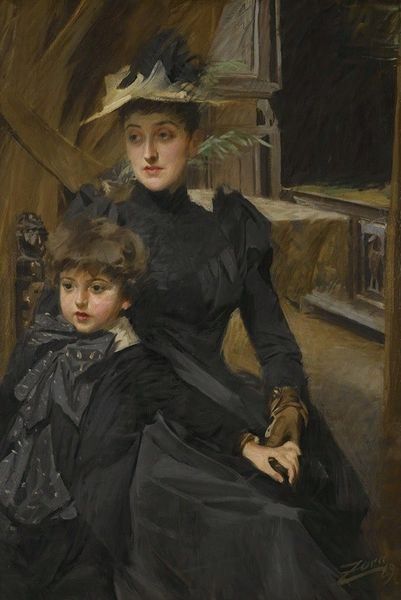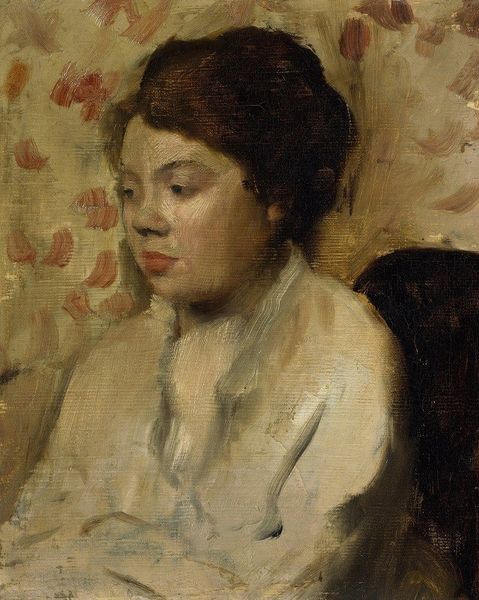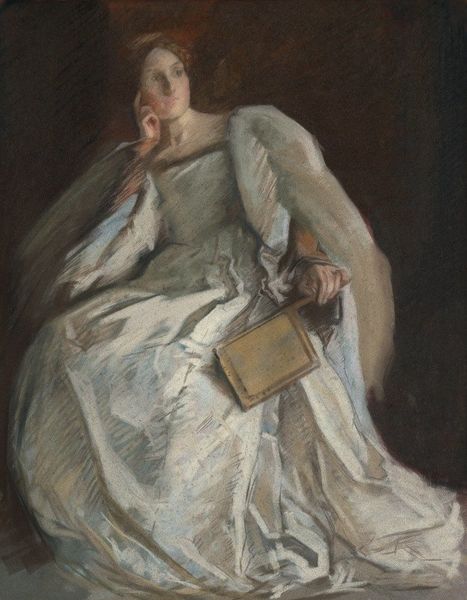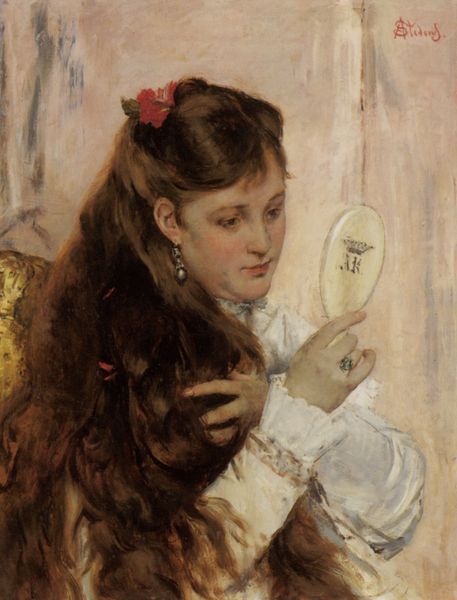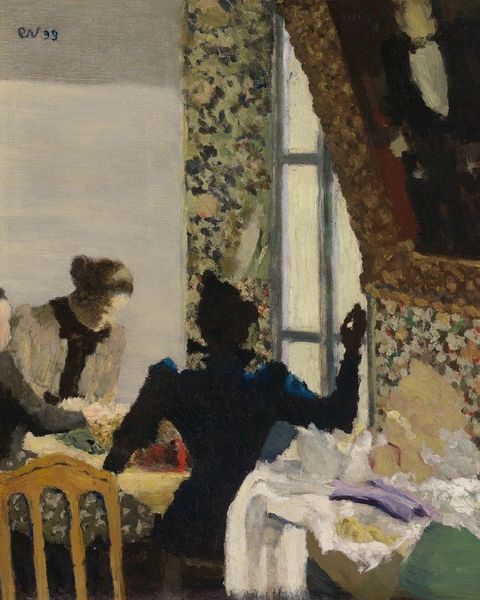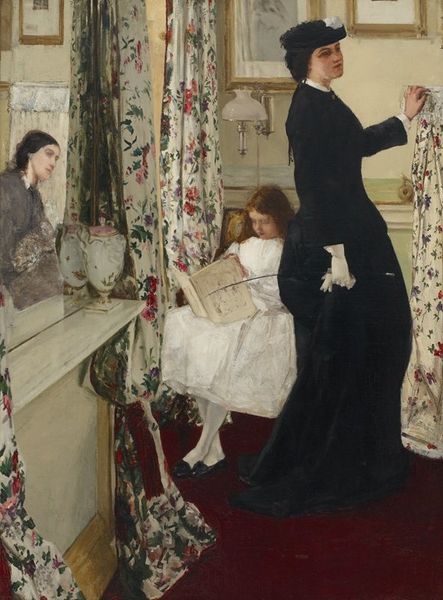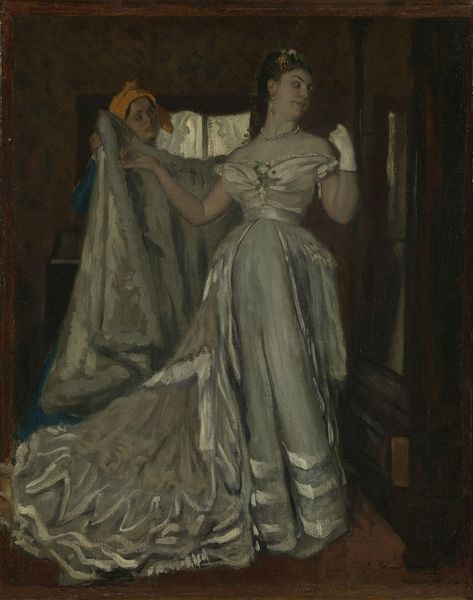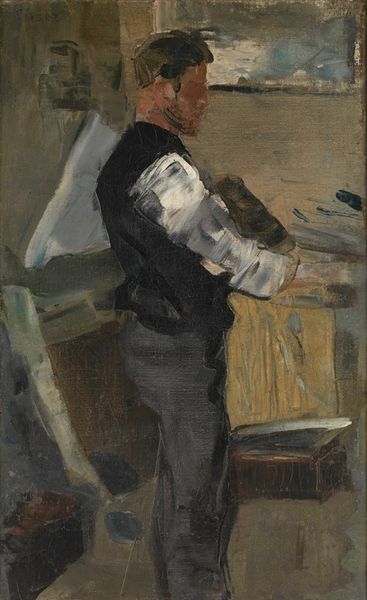
Copyright: Public Domain: Artvee
Curator: Looking at Berthe Morisot’s 1872 oil painting, “The Cradle,” I immediately feel a profound sense of intimacy. What captures your attention? Editor: Well, besides the title’s obvious suggestion, I am struck by how the artist composes the scene using this diaphanous curtain as both a separator and a unifier between mother and child. It’s like a semiotic veil hinting at the permeable boundary between them. Curator: Absolutely! It is permeable, isn’t it? Morisot masterfully uses the veil to obscure and reveal simultaneously. We see the mother, her gaze softly focused on her child, who is only just visible through the delicate fabric of the cradle. It makes you wonder what she’s thinking. I imagine the quiet hopes, fears, and overwhelming love that motherhood stirs. It’s tender and so human. Editor: Indeed. Considering the loose brushwork and the emphasis on capturing the transient effects of light, the painting epitomizes Impressionist aesthetics. I’m thinking how the layering of the veil draws attention to its textural qualities, its capacity for diffusion, which can serve to both focus on the sleeping infant while obscuring a complete view. Curator: I feel it pulls us closer to Morisot’s personal life—her experience, her identity. As one of the few women who were a part of the movement, it makes her representation that much more special. Editor: And more broadly, it underscores Impressionism’s preoccupation with modern life—yet focused through the lens of domesticity and femininity. It also serves to reinforce the formal features, with contrasts, tones, shadows to shape meaning, using a language of light. Curator: The fact that she depicts her sister, Edma, watching over her baby daughter, Blanche, reinforces this intimate feeling. It feels like an honor to be given entry into such a personal scene. Editor: I agree. The artwork embodies those deeply private sentiments while offering a subtle commentary on both visual experience and contemporary culture. Curator: It’s incredible how the simple depiction of motherhood can communicate universal feelings that echo across generations, all within the constraints of the visual language employed by Morisot. Editor: Indeed, from its brushstrokes to the visual interplay between transparency and opacity, the work engages with visual experience, perception and emotion on many levels.
Comments
No comments
Be the first to comment and join the conversation on the ultimate creative platform.
